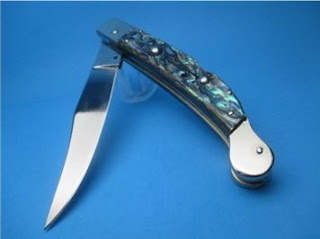The Birth Of Italian Stiletto Switchblade
We all are aware of the various switchblades that are available in the market. But each one of them have some distinguished feature that sets one apart from the other. One such type is Italian stiletto switchblades. Historically, the term "stiletto" comprises any dagger featuring a slender, pointed tip and triangular cross-section. After the end of World War II, the term has become synonymous with the automatic switchblades that American G.I.’s brought home as souvenirs. If you are a knife enthusiasts, look for Italian automatic knives for sale.
Origin
The roots of the iconic stiletto switchblade design can be traced to the French "Chatellerault" automatic blades of the mid-1800s. Its first ever production began in the northeastern town of Maniago somewhere between 1900 and 1920. American soldiers were introduced to the modern Italian switchblade after Italy’s surrender in 1943. As a consequence, the knives found their way back to the United States as souvenirs and people loved it.
Rise and fall of Italian Stiletto switchblade
In 1946, Jack Polincovsky of New York founded the Latin America Import Export Company (LATAMA). His son, Sam Polk, collaborated with master craftsman Patrizio Pasquale designed the prototype for the LATAMA switchblade. When Polk traveled across the United States to advertise his cutlery line,he succeeded quickly, the market for Italian switchblades was thriving, prompting knife makers in Italy to increase production. A combination of stiletto-related violence and public outcry led to the Federal Switchblade Act of 1958, which put serious restrictions on the sale and manufacturing of automatic knives.
Distinguished mechanism
The blade of the knife rotates on an axle at its base. The knife’s spring is long, narrow piece of metal that is cut down the center and shaped into a tight "V" that opens toward the blade. When the blade is folded, the base compresses arms of the V-shaped spring together to create tension. A separate spring-loaded mechanism forces a pin into a hole at the base of the blade, locking it into place. When the user pushes the trigger, the locking pin is removed, and the compressed spring expands back to its original V-shape.



Comments
Post a Comment